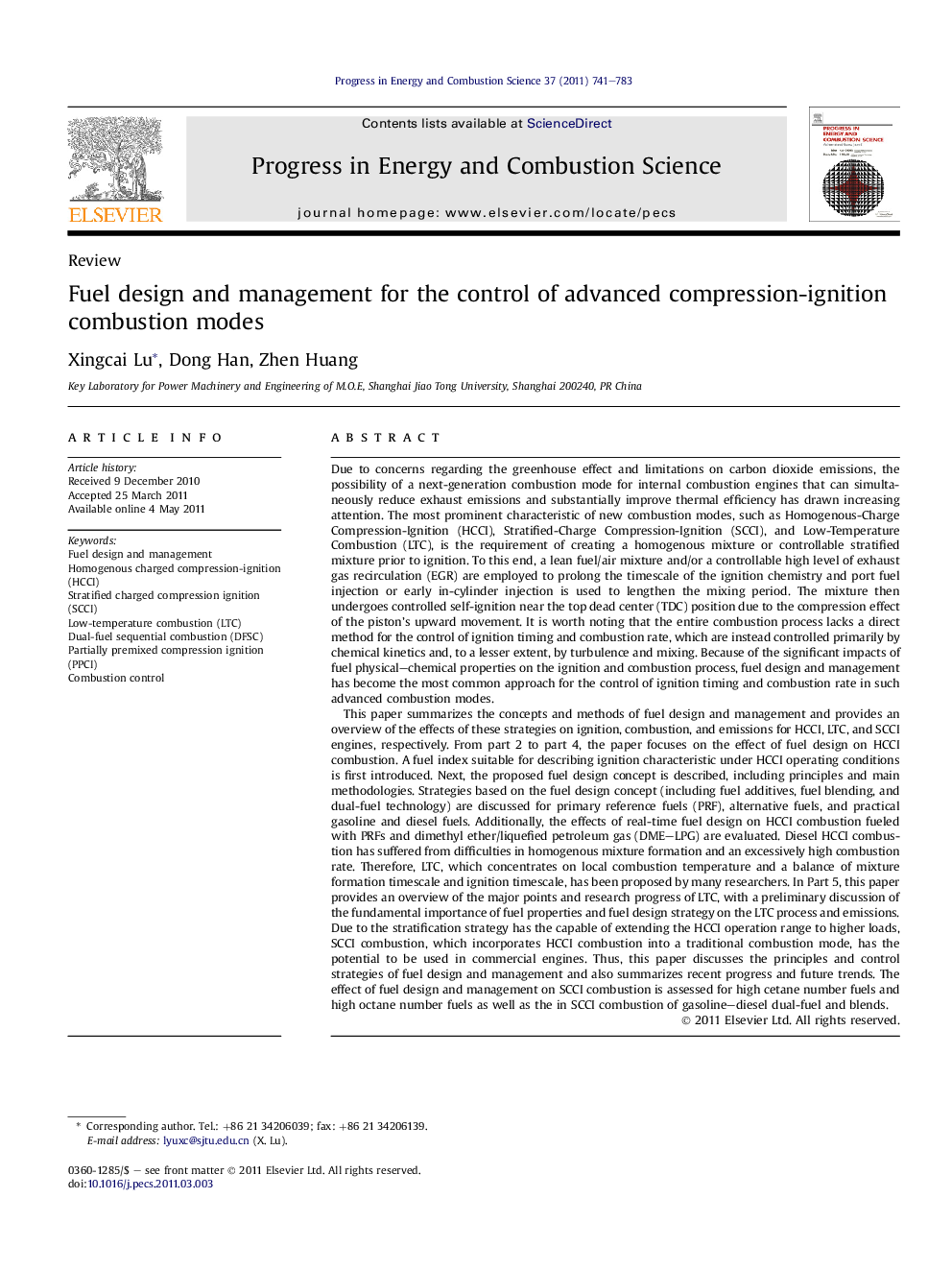| کد مقاله | کد نشریه | سال انتشار | مقاله انگلیسی | نسخه تمام متن |
|---|---|---|---|---|
| 241704 | 466311 | 2011 | 43 صفحه PDF | دانلود رایگان |

Due to concerns regarding the greenhouse effect and limitations on carbon dioxide emissions, the possibility of a next-generation combustion mode for internal combustion engines that can simultaneously reduce exhaust emissions and substantially improve thermal efficiency has drawn increasing attention. The most prominent characteristic of new combustion modes, such as Homogenous-Charge Compression-Ignition (HCCI), Stratified-Charge Compression-Ignition (SCCI), and Low-Temperature Combustion (LTC), is the requirement of creating a homogenous mixture or controllable stratified mixture prior to ignition. To this end, a lean fuel/air mixture and/or a controllable high level of exhaust gas recirculation (EGR) are employed to prolong the timescale of the ignition chemistry and port fuel injection or early in-cylinder injection is used to lengthen the mixing period. The mixture then undergoes controlled self-ignition near the top dead center (TDC) position due to the compression effect of the piston’s upward movement. It is worth noting that the entire combustion process lacks a direct method for the control of ignition timing and combustion rate, which are instead controlled primarily by chemical kinetics and, to a lesser extent, by turbulence and mixing. Because of the significant impacts of fuel physical–chemical properties on the ignition and combustion process, fuel design and management has become the most common approach for the control of ignition timing and combustion rate in such advanced combustion modes.This paper summarizes the concepts and methods of fuel design and management and provides an overview of the effects of these strategies on ignition, combustion, and emissions for HCCI, LTC, and SCCI engines, respectively. From part 2 to part 4, the paper focuses on the effect of fuel design on HCCI combustion. A fuel index suitable for describing ignition characteristic under HCCI operating conditions is first introduced. Next, the proposed fuel design concept is described, including principles and main methodologies. Strategies based on the fuel design concept (including fuel additives, fuel blending, and dual-fuel technology) are discussed for primary reference fuels (PRF), alternative fuels, and practical gasoline and diesel fuels. Additionally, the effects of real-time fuel design on HCCI combustion fueled with PRFs and dimethyl ether/liquefied petroleum gas (DME–LPG) are evaluated. Diesel HCCI combustion has suffered from difficulties in homogenous mixture formation and an excessively high combustion rate. Therefore, LTC, which concentrates on local combustion temperature and a balance of mixture formation timescale and ignition timescale, has been proposed by many researchers. In Part 5, this paper provides an overview of the major points and research progress of LTC, with a preliminary discussion of the fundamental importance of fuel properties and fuel design strategy on the LTC process and emissions. Due to the stratification strategy has the capable of extending the HCCI operation range to higher loads, SCCI combustion, which incorporates HCCI combustion into a traditional combustion mode, has the potential to be used in commercial engines. Thus, this paper discusses the principles and control strategies of fuel design and management and also summarizes recent progress and future trends. The effect of fuel design and management on SCCI combustion is assessed for high cetane number fuels and high octane number fuels as well as the in SCCI combustion of gasoline–diesel dual-fuel and blends.
Journal: Progress in Energy and Combustion Science - Volume 37, Issue 6, December 2011, Pages 741–783